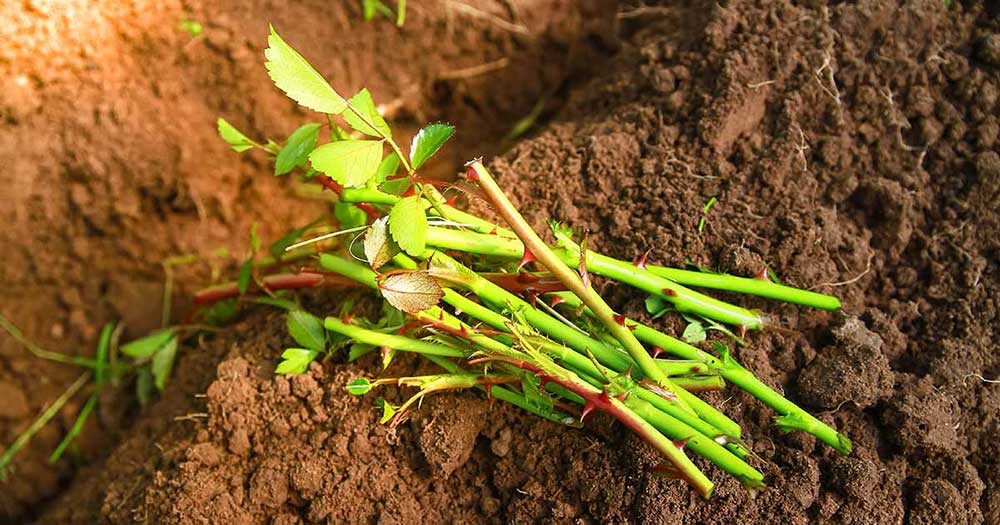Roses are one of the most popular flowering plants in the world, known for their beauty and fragrance. If you are planning to grow roses in your garden, it is essential to know the proper method of planting and propagating them. In this article, we will discuss the steps involved in planting and propagating roses.
What is a rose?
A rose is a type of flowering shrub or vine that belongs to the genus Rosa in the family Rosaceae. Roses are renowned for their beauty, fragrance, and range of colors, and are widely cultivated for ornamental, commercial, and medicinal purposes. The flowers of the rose plant have a distinctive symmetrical shape with five petals, and come in a wide variety of shapes and sizes, from small, delicate blooms to large, showy ones. Roses are a symbol of love, romance, and beauty, and have been revered by cultures around the world for centuries.
Types of roses
There are many types of roses, and they can be classified into several categories based on their characteristics, growth habits, and uses. Here are some of the most common types of roses:
- Hybrid tea roses: These are the most popular type of roses and are often used for cut flowers. They have a classic rose shape with large, high-centered blooms that come in a wide range of colors.
- Floribunda roses: These are a cross between hybrid tea roses and polyantha roses, and produce clusters of smaller blooms. They are often used for landscaping and come in a range of colors.
- Grandiflora roses: These are a cross between hybrid tea roses and floribunda roses, and produce large, high-centered blooms on tall stems. They are often used as specimen plants in the landscape.
- Climbing roses: These roses have long canes that can be trained to climb walls, trellises, or arbors. They come in a range of colors and produce blooms all season long.
- Miniature roses: These are small, compact plants that produce tiny blooms in a range of colors. They are often used for edging, containers, or as indoor plants.
- Shrub roses: These are hardy, disease-resistant plants that produce blooms all season long. They come in a range of colors and are often used in mixed borders or as hedges.
- Old garden roses: These are roses that were developed before the 20th century, and are often highly fragrant with a wide range of colors and shapes.
- Landscape roses: These are hardy, disease-resistant roses that are often used for mass plantings or as groundcovers. They come in a range of colors and require minimal maintenance.
These are just a few examples of the many types of roses available. Within each category, there are many different cultivars and varieties with their own unique characteristics and features.
Planting Roses
The best time to plant roses is in the spring or fall when the soil is moist and the temperatures are mild. Follow these steps for planting roses:
- Choose a sunny spot: Roses need at least 6 hours of direct sunlight daily to thrive. Choose a location that gets plenty of sunlight and has well-draining soil.
- Prepare the soil: Roses prefer fertile, well-draining soil with a pH between 6.0 and 6.5. Mix compost or well-rotted manure into the soil to improve its texture and nutrient content.
- Dig a hole: Dig a hole that is twice as wide and deep as the root ball of the rose plant.
- Soak the roots: Before planting, soak the roots of the rose plant in water for a few hours to ensure they are well-hydrated.
- Plant the rose: Place the rose plant in the hole and backfill with soil. Water thoroughly.
- Mulch: Add a layer of mulch around the base of the plant to help retain moisture and prevent weeds.
- Water regularly: Water the rose plant deeply once or twice a week, depending on the weather.
Propagating Roses
There are several methods of propagating roses, including taking cuttings, layering, and grafting. In this section, we will discuss the two most common methods of propagating roses:
Taking Cuttings
Taking cuttings is the most common method of propagating roses. Follow these steps:
- Choose a stem: Select a healthy stem that is about 6 inches long and has several leaves.
- Cut the stem: Using a sharp, clean pair of pruning shears, cut the stem at a 45-degree angle just below a leaf node.
- Remove leaves: Remove all the leaves from the bottom half of the stem.
- Dip in rooting hormone: Dip the cut end of the stem in rooting hormone powder.
- Plant the cutting: Plant the stem in a pot filled with a mixture of perlite and peat moss. Water thoroughly and cover with a plastic bag to create a humid environment.
- Wait for roots to form: In about 6-8 weeks, the cutting should develop roots. You can then transplant it into a larger pot or directly into the ground.

Layering
Layering involves encouraging a stem to form roots while it is still attached to the parent plant. Follow these steps:
- Choose a stem: Select a healthy stem that is flexible and can be bent to the ground.
- Bend the stem: Bend the stem to the ground and cover it with soil, leaving the tip exposed.
- Secure the stem: Use a wire or stake to hold the stem in place.
- Wait for roots to form: In about 6-8 weeks, the stem should develop roots. You can then cut it from the parent plant and transplant it into a pot or directly into the ground.
shahrekado
Shahrekado store is next to you, dear ones, to surprise your lover even from a distance. Experience sending flowers to Iran and sending flowers to Europe with us.
conclusion
In conclusion, roses are a beautiful addition to any garden, and with proper planting and propagating techniques, you can enjoy their beauty for years to come. Whether you choose to plant from a nursery-bought plant or propagate your own, follow the steps outlined above for the best results.


















